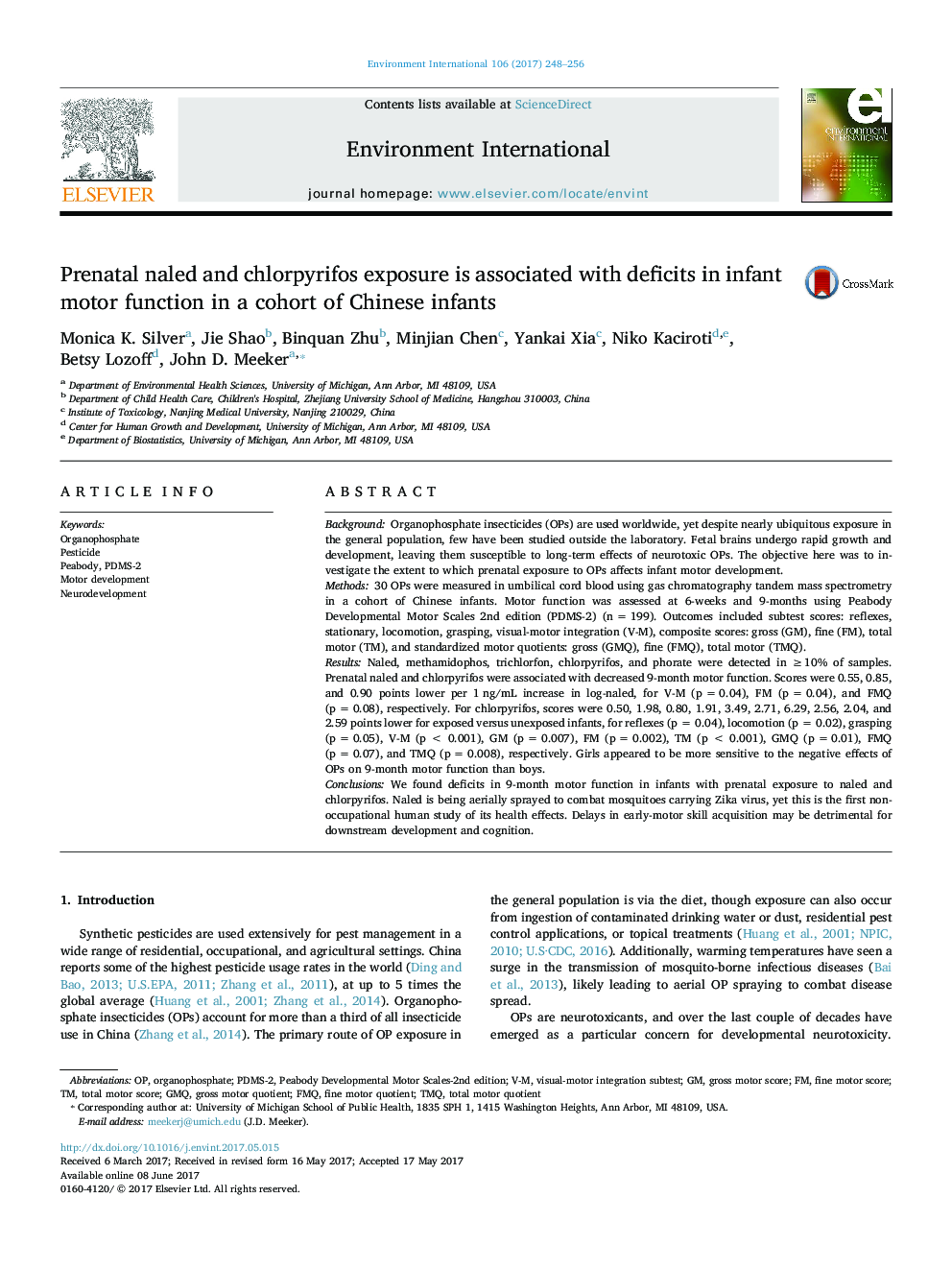| Article ID | Journal | Published Year | Pages | File Type |
|---|---|---|---|---|
| 5748386 | Environment International | 2017 | 9 Pages |
â¢Chinese infants prenatally exposed to organophosphate insecticides were tested for motor function at 6-weeks and 9-months.â¢Prenatal naled and chlorpyrifos exposure was associated with statistically significant deficits in 9-month motor outcomes.â¢Prenatal organophosphate exposure may affect infant motor skill development.
BackgroundOrganophosphate insecticides (OPs) are used worldwide, yet despite nearly ubiquitous exposure in the general population, few have been studied outside the laboratory. Fetal brains undergo rapid growth and development, leaving them susceptible to long-term effects of neurotoxic OPs. The objective here was to investigate the extent to which prenatal exposure to OPs affects infant motor development.Methods30 OPs were measured in umbilical cord blood using gas chromatography tandem mass spectrometry in a cohort of Chinese infants. Motor function was assessed at 6-weeks and 9-months using Peabody Developmental Motor Scales 2nd edition (PDMS-2) (n = 199). Outcomes included subtest scores: reflexes, stationary, locomotion, grasping, visual-motor integration (V-M), composite scores: gross (GM), fine (FM), total motor (TM), and standardized motor quotients: gross (GMQ), fine (FMQ), total motor (TMQ).ResultsNaled, methamidophos, trichlorfon, chlorpyrifos, and phorate were detected in â¥Â 10% of samples. Prenatal naled and chlorpyrifos were associated with decreased 9-month motor function. Scores were 0.55, 0.85, and 0.90 points lower per 1 ng/mL increase in log-naled, for V-M (p = 0.04), FM (p = 0.04), and FMQ (p = 0.08), respectively. For chlorpyrifos, scores were 0.50, 1.98, 0.80, 1.91, 3.49, 2.71, 6.29, 2.56, 2.04, and 2.59 points lower for exposed versus unexposed infants, for reflexes (p = 0.04), locomotion (p = 0.02), grasping (p = 0.05), V-M (p < 0.001), GM (p = 0.007), FM (p = 0.002), TM (p < 0.001), GMQ (p = 0.01), FMQ (p = 0.07), and TMQ (p = 0.008), respectively. Girls appeared to be more sensitive to the negative effects of OPs on 9-month motor function than boys.ConclusionsWe found deficits in 9-month motor function in infants with prenatal exposure to naled and chlorpyrifos. Naled is being aerially sprayed to combat mosquitoes carrying Zika virus, yet this is the first non-occupational human study of its health effects. Delays in early-motor skill acquisition may be detrimental for downstream development and cognition.
